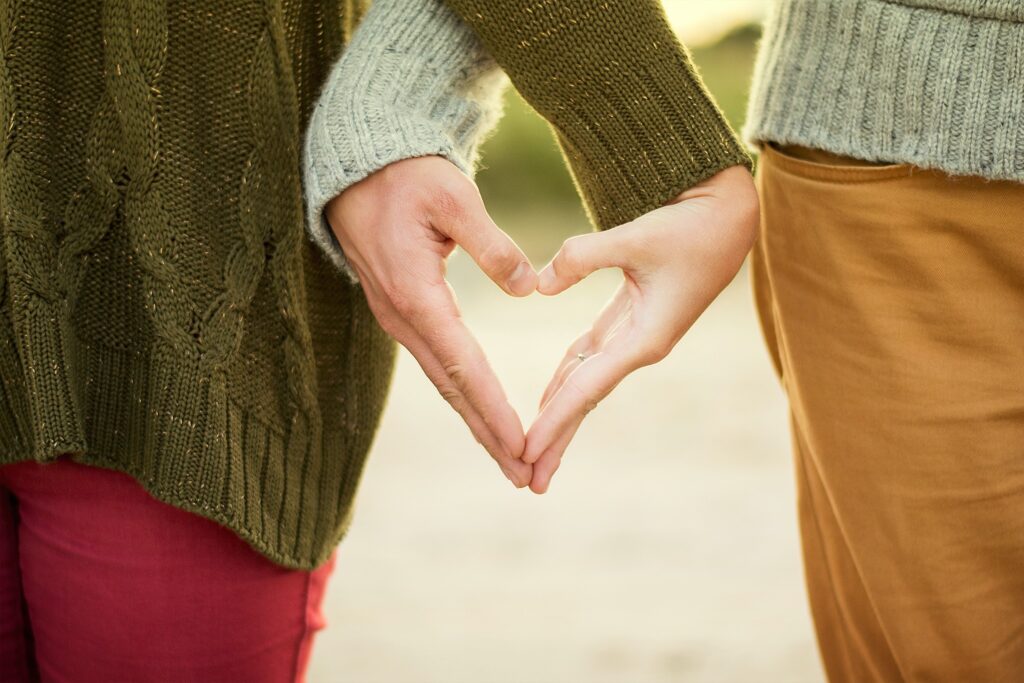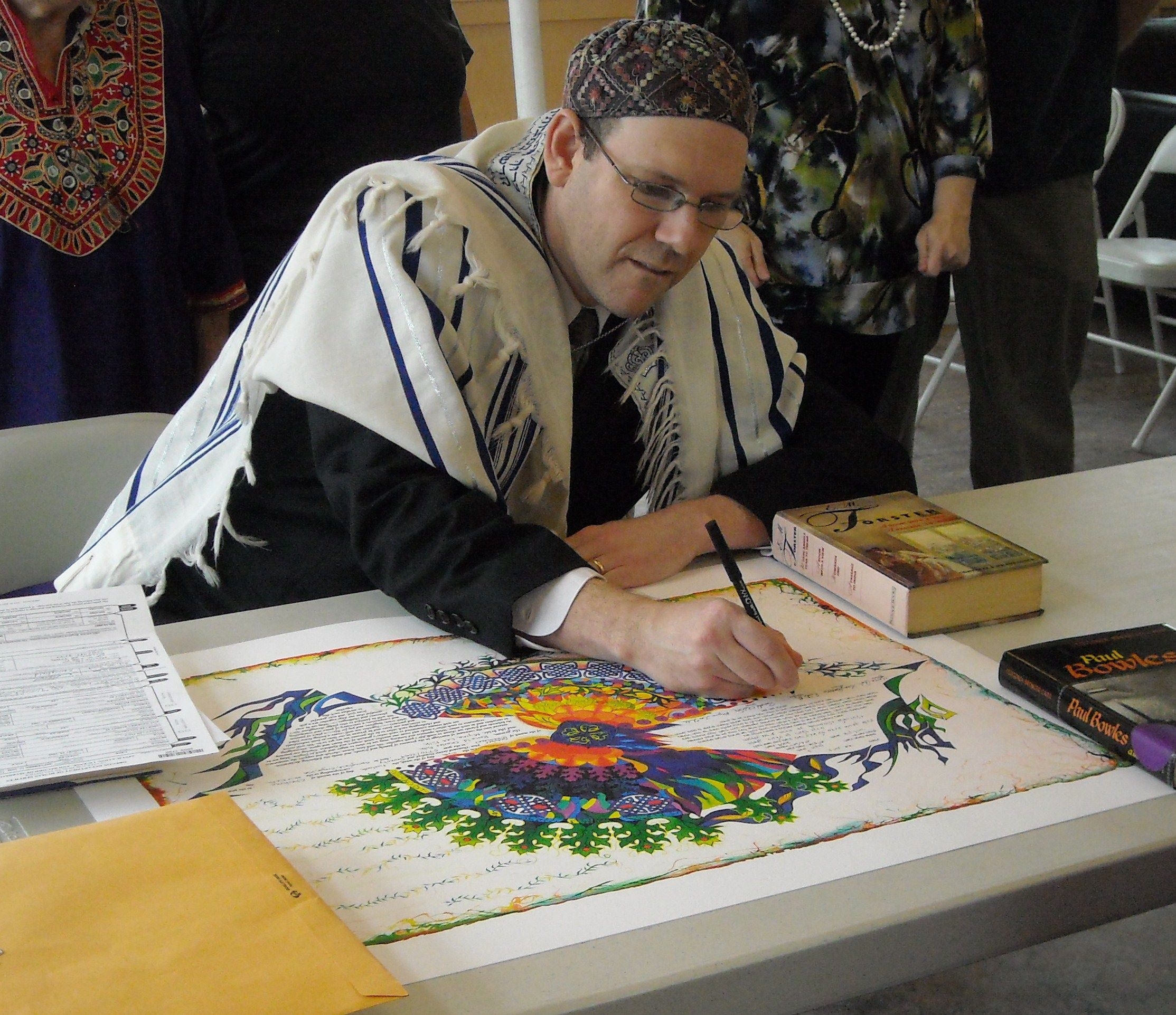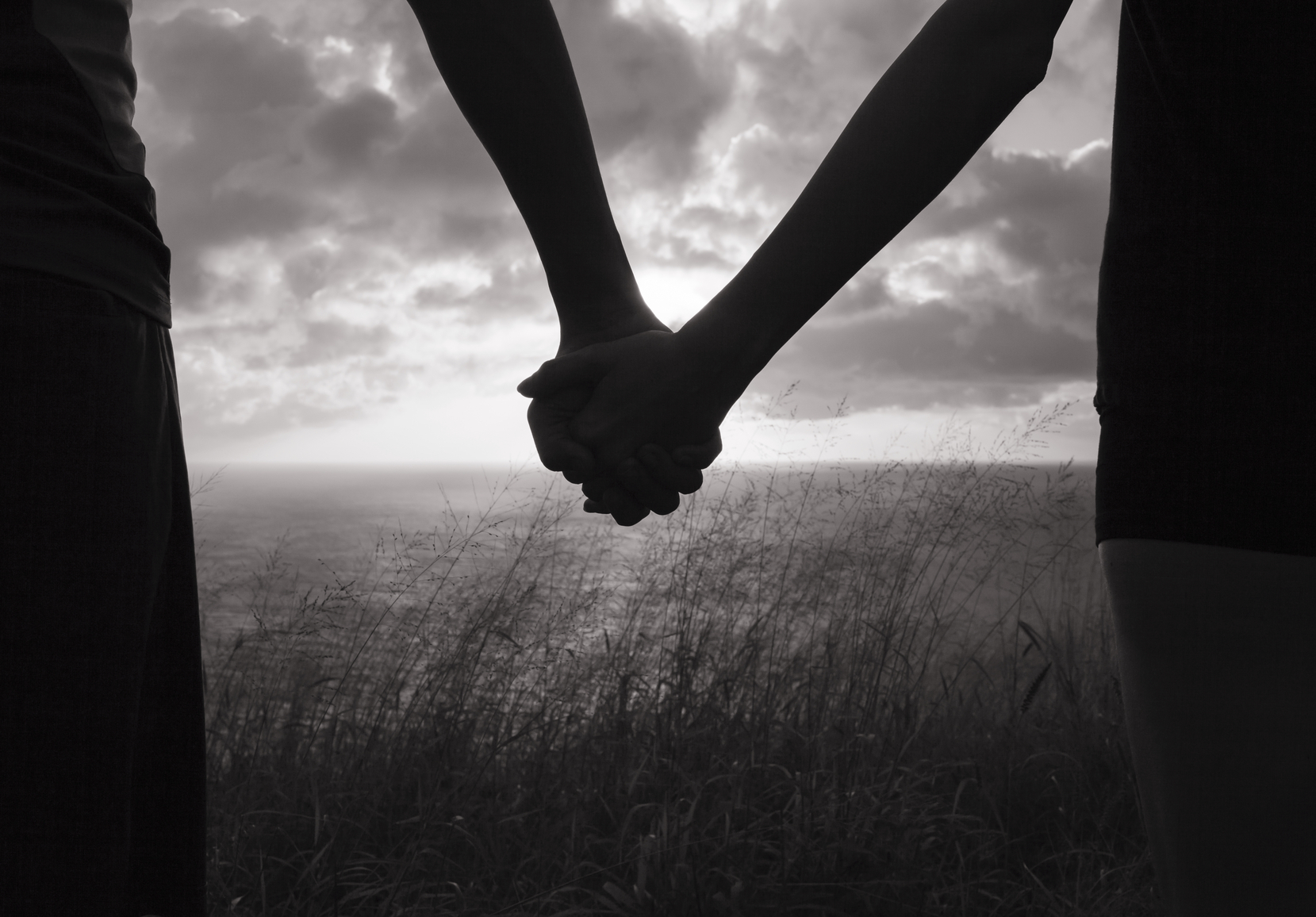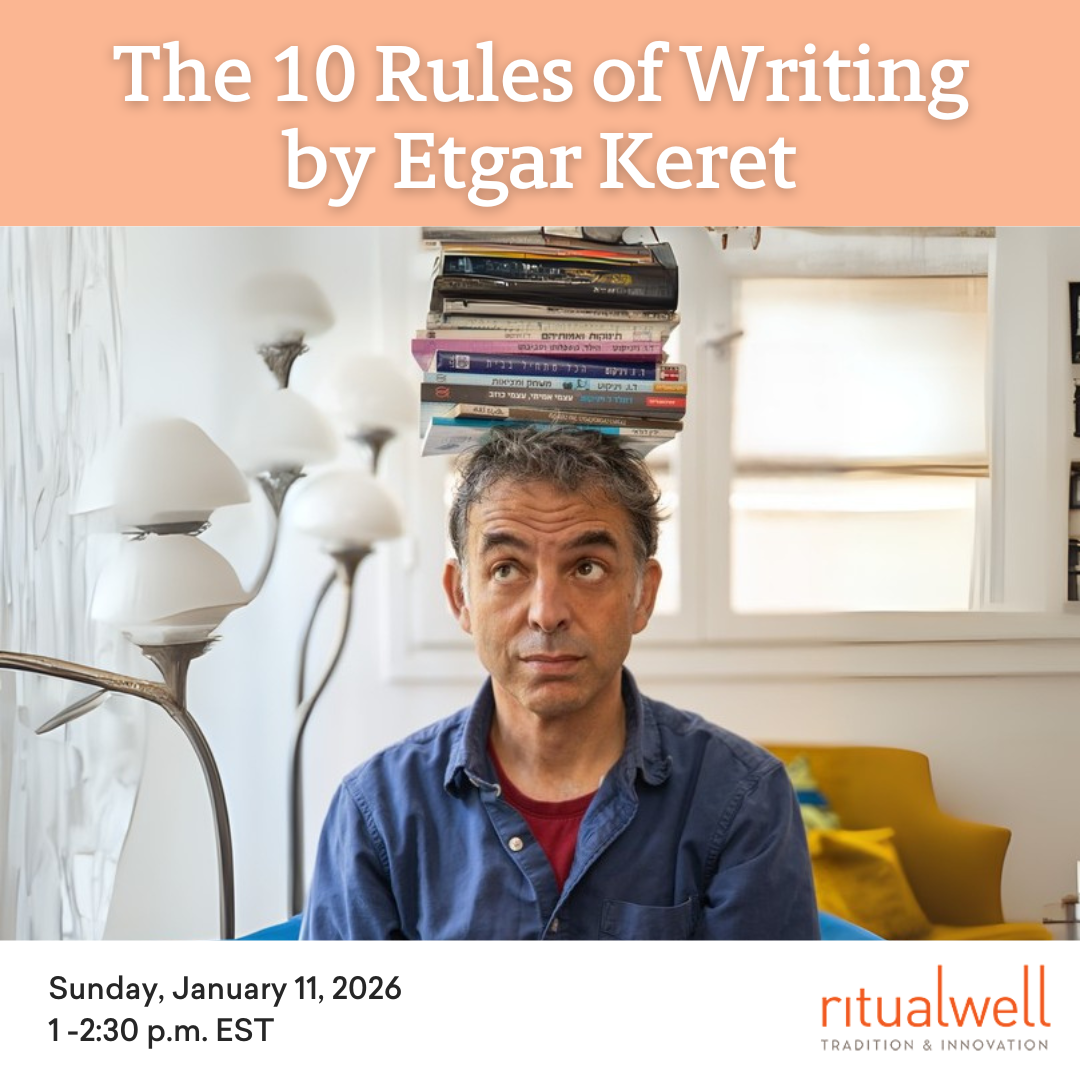Introduction
Over the past months as a newly ordained rabbi, I have had the privilege of officiating at a number of weddings involving transgender and/or gender nonconforming people. In some ways these weddings are no more or less unique than any other wedding and involve the same spiritual complexities and personal nuances as a mainstream wedding. However, there are also a few issues that emerged that led to different ritual or pastoral decisions. This is a ritual template for creating a Jewish wedding service that celebrates gender and sexual diversity.
This ritual template is very similar to a traditional Jewish wedding. I have made a few linguistic changes in the service to more honestly speak to a variety of different identities, but the flow of the ritual follows the classical pattern. This choice reflects my belief that rituals that have organically developed over centuries are more effective and multi-vocal than the newly minted kind. I also think that gender and sexual diversity has always existed within Jewish communities and this diversity lies buried within the traditional texts of our tradition and it is up to us to claim the richness of our heritage.
There are two main issues that are specific to weddings for transgender and gender nonconforming families that impact the creation of this ritual:
- Ritually signifying the gender identity of each member of the couple. Weddings can be an opportunity to bring together relatives or friends from the past. This is a wonderful chance to pull these people into the present life of the partners; however there may be confusion about how the partners want their gender to be understood. It is up to the officiant to clearly indicate how each member of the partnership should be celebrated: as a bride, as a groom, or as something else. It is possible to indicate gender subtly within the liturgical flow of the service. This is a spiritually significant moment for these lovers and they deserve to be seen and recognized as fully as possible.
- Family of origin and chosen family. Because of the realities of homophobia and transphobia many queer, transgender and gender nonconforming people have estranged or difficult relationships with their families of origin. Furthermore, within LGBTIQ (lesbian, gay, bisexual, transgender, intersex, and queer) communities the concept of “family” has been redefined to encompass a wide variety of configurations and includes relatives not connected by the traditional ties of biology or legally sanctioned marriage. It is important for the officiant to understand who each member of the partnership does or does not see as their family and extend the appropriate honors and visibility to these people.
Finally, a note on the Hebrew used in this template. It is impossible to refer to an individual without using gender in Hebrew. To solve this problem one possible option is to mix up the gender of the pronoun and the gender of the verb as I have done throughout this template in order to indicate gender complexity. If these “mixed up” options are being used, they should be explained and contextualized by the officiant so it doesn’t simply seem like incorrect Hebrew.
Ritual Template
Outline
I. Welcome
II. Birkat Erusin (Blessings of Commitment)
III. Kiddushin (Blessings of Holiness)
IV. Ketubah
V. Sheva Brakhot (Seven Blessings of Joy)
VI. Birkat Kehillah (Blessing of Community)
VII. Breaking the Glass
I. Welcome
It is traditional to welcome the partners to the huppah with a Hebrew blessing and this is a good opportunity to immediately signal how the partners want their genders to be understood. This can be done by saying something simple like: “We welcome Shoshana and Chaya with the blessing for two brides…” Each member of the partnership can be welcomed individually or they can be greeted together.
For a bride:
בְּרוּכָה הַבָּאָה בְּשֵׁם אֲדֹנָי
Brukha ha’ba’a b’shem Adonay
For a groom:
בָּרוּךְ הַבָּא בְּשֵׁם אֲדֹנָי
Barukh ha’ba b’shem Adonay
For an individual who wants to indicate an alternate gender identity:
בְּרוּכָה הַבָּא בְּשֵׁם אֲדֹנָי
Brukha ha’ba b’shem Adonay
For two brides:
בְּרוּכוֹת הַבָּאוֹת בְּשֵׁם אֲדֹנָי
Brukhot ha’baot b’shem Adonay
For two grooms, for a bride and a groom, or for a couple that wants to indicate as little gender as possible:
בְּרוּכִים הַבָּאִים בְּשֵׁם אֲדֹנָי
Brukhim ha’ba’im b’shem Adonay
For a couple that would like to indicate complex genders:
בְּרוּכִים הַבָּאוֹת בְּשֵׁם אֲדֹנָי
Brukhim ha’ba’ot b’shem Adonay
Translation of all of the above:
Blessed are you who come in the name of the Eternal!
After welcoming the partners to the huppah it has become a common tradition to mention deceased loved ones who are not physically present, but whose memories we want to honor at this ritual. This is an opportunity to signal to the community who is seen as “family” at this event and identify deceased members of the couple’s chosen family as relatives.
II. Blessings of Commitment (Birkat Erusin)
In a traditional wedding service birkat erusin, the blessing of betrothal, indicates that the couple is entering into a “permitted” as opposed to a “prohibited” relationship. The definition of “prohibited” relationships in traditional Jewish law includes LGBTIQ expressions of love and identity. However, I think the idea of a blessing for commitment that asserts the idea that the relationship we are celebrating is worth sanctifying is important. I wrote this alternative birkat erusin (Rabbi Justin Lewis helped me to formulate the Hebrew of this blessing) to reflect the idea that lovers of all genders and sexual identities can be holy, but only caring consensual relationships are sanctified within Jewish sacred tradition.
Barukh Atah Adonay, Eloheynu Melekh ha-olam, borey p’ri ha-gafen
Blessed are You, O Eternal our God, and Ruler of the World, Who creates the fruit of the vine.
בָּרוּךְּ אַתָּה אֲדֹנָי אֱלֹהֵינוּ מֶלֶךְ הָעוֹלָם אֲשֶׁר קִדַּשְׁנוּ קִדַּשְׁנוּ בְּמִצְוֹתָיו וְצִוָּנוּ עַל מִצּוֹת בֵּין אָדָם לַחֲבֵרוֹ וְעַשֵּׂר לָנוּ נִיתְצוּל וְהִתְעַלְּלוּת וְהִיתִר לָנוּ בְּרִיתוֹת אֲהוּבִים. בָּרוּךְ אַתָּה אֲדֹנָי מְקַדֵּשׁ עַמּוֹ יִשְׂרָאֵל עַל יְדֵי חֻפָּה
Barukh Atah Adonay, Eloheynu Melekh ha-olam, asher kid’shanu b’mitzvotav, vitzivanu al mitzvot beyn adam l’khaveyro, v’aser lanu nitsul v’hit’al’lut, v’hitir lanu britot ahuvim. Barukh Atah Adonay, m’kadesh amo Yisra’el al y’dey hupah.
Blessed are You, Eternal our God, and Ruler of the World, who has set us apart through sacred obligations, and commanded us about the responsibilities of all humans for each other. You have forbidden exploitation and abuse, and permitted covenants of love. Blessed are You, Eternal One, who makes your people Israel (all those who struggle with God), holy with a huppah (a canopy of love and protection.)
Partners share the wine.
III. Blessings of Holiness (Kiddushin)
Kiddushin, which literally means holiness or “setting apart,” is the heart of the Jewish wedding service and signifies the sanctity of this moment. However, in traditional Jewish law the words of kiddushin lead to the legal acquisition of the bride by the groom. Modern egalitarian communities have tried to redefine these words, however I feel like the formula itself is inherently problematic. I have changed the liturgy to reflect the idea that no acquisition is taking place in an egalitarian wedding. Instead of saying: “Behold I am making you holy/set apart!” I suggest that couples say: “Behold, you are holy/set apart for me.” This change in the language shifts the beloved from the object to the subject of the sentence, hence avoiding any implication of objectification!
Partners exchange an item of value and each says to the other:
To a groom:
הֲרֵי אַתָּה קֻדַּשׁ לִי
Haray atah kudash li!
To a bride:
הֲרֵי אַתְּ קֻדֶשֶׁת לִי
Haray at kudeshet li!
To an individual who does not wish to identify as either a bride or a groom:
הֲרֵי אַתְּ קֻדֶשׁ לִי
Haray at kudash li!
Translation:
Behold, you are holy to me!
Some couples may choose to add the traditional words: K’dat Moshe v’Yisrael (according to the religion of Moses and Israel)
IV. Ketubah and/or Personal Vows
At this point in the ritual in order to indicate the break between the legal betrothal and the joyful celebration of the partnership, the wedding contract is usually read. A variety of forms of ketubot can be written to reflect the particular needs of the couple. This is also an appropriate moment to insert personal readings, vows, etc., to reflect the complex realities of queer, transgender, and gender nonconforming families. These vows may also reflect the cultural diversity of chosen families or families of origin.
VI. Seven Blessings of Joy (Sheva Brakhot)
The seven blessings recited at a wedding shift the ritual from a legal commitment ceremony to a joyful celebration of the union. Most of the words of these blessings can be used with queer, transgender, and gender nonconforming families with very small adjustments and/or explanations.
The only language that I have changed is using “ahuv v’yedid” (gender neutral terms for “lover and beloved”) in the place of the words “hatan v’kallah” (bride and groom). In the seventh blessing I have also changed the word “narim” (servant boys) to “hevarim” (friends/community) to reflect a queer sense of chosen family.
The rest of the language I have not changed, but I sometimes feel a need to interpret some of these texts so that they make sense in a queer context. The focus on Zion and Israel in the fifth blessing may feel overly particularistic to queer, transgender, and gender nonconforming individuals who are used to experiences of exclusion. I usually explain that the word “Israel” can be understood as a non-national or ethnic concept in classical texts. The translation of “Israel” is “God-wrestler” and I often suggest that we understand the word literally as all people who are struggling to live a more whole life in relationship to the Divine.
The Garden of Eden and Adam and Chava, the first human beings, are mentioned in the third and fourth blessings. To some LGBTIQ people this reference may feel inherently heterosexual, however it may be helpful to explain that according to the Midrash (Bereshit Rabbah) the first human being created in the image of God was an androgynos, an intersex person. Hence the primordial joy of the first human being connecting to another person is relevant for lovers of all genders.
1.
Barukh Atah Adonay, Eloheynu Melekh ha-olam, borey p’ri ha-gafen
Blessed are You, Eternal, our God and Ruler of the World, Who creates the fruit of the vine.
2.
בָּרוּךְ אַתָּה אֲדֹנָי אֱלֹהֵינוּ מֶלֶךְ הָעוֹלָם שֶׁהַכֹּל בָּרָא לִכְבוֹדוֹ
Barukh Atah Adonay, Eloheynu Melekh ha-olam, she-ha-kol bara likh-vodo.
Blessed are You, Eternal, our God and Ruler of the World, who has created everything in Your glory.
3.
בָּרוּךְ אַתָּה אֲדֹנָי אֱלֹהֵינוּ מֶלֶךְ הָעוֹלָם יוֹצֵר הָאָדָם
Barukh Atah Adonay, Eloheynu Melekh ha-olam, yotser ha-adam.
Blessed are You, Eternal our God, and Ruler of the World, who is forming the human being.
4.
בָּרוּךְ אַתָּה יְיָ אֱלֹהֵינוּ מֶלֶךְ הָעוֹלָם, אֲשֶׁר יָצַר אֶת הָאָדָם בְּצַלְמוֹ, בְּצֶלֶם דְּמוּת תַּבְנִיתוֹ, וְהִתְקִין לוֹ מִמֶּנּוּ בִּנְיַן עֲדֵי עַד: בָּרוּךְ אַתָּה יְיָ, יוֹצֵר הָאָדָם
Barukh Atah Adonay, Eloheynu Melekh ha-olam,
asher yatsar et ha-adam b’tsalmo,
b’tselem demut tavnito,
v’hitkin lo mimenu binyan adey ad.
Barukh Atah Adonay, yotser ha-adam.
Blessed are You, Eternal our God, and Ruler of the World,
who has created us all in Your image,
in the image of the likeness of Yourself,
and placed within us an eternally renewing structure.
Blessed are You, Eternal, Architect of humanity.
5.
שׂוֹשׂ תָּשִׂישׂ וְתָגֵל הָעֲקָרָה, בְּקִבּוּץ בָּנֶיהָ לְתוֹכָהּ בְּשִׂמְחָה: בָּרוּךְ אַתָּה יְיָ, מְשַׂמֵּחַ צִיּוֹן בְּבָנֶיהָ
Sos tasis v’tagel ha-akara,
b’kibutz baneha l’tokhah b’simkha.
Barukh Atah Adonay, m’sameyakh Tziyon b’vanehah
Joy – bring joy and gladness to the lonely city,
by gathering her children to her in happiness.
Blessed are You, Eternal, who will make Zion happy with her children.
6.
שָׂמֵחַ תְּשַׂמְּחִי חֲבָרוֹת חֲבֵרִים הַאֲהוּבוֹת הַאֲהוּבִים כְּשָׂמְחֲךָ יְצִירְךָ בְּגַן עֵדֶן מִקֶּדֶם. בָּרוּךְ אַתָּה אֲדֹנָי מְשַׂמֵּחַ חֲבֵרִים אֲהוּבִים
Sameyakh t’samakh khaverot(im) ha-ahuvot (im),
k’samey-kha-kha yetsir-kha b’Gan Eyden mi-kedem.
Barukh Atah Adonay, m’sameyakh khaverim ahuvim.
Give delight, delight to these loving friends,
as you delighted Your creations in Paradise of old.
Blessed are You, Eternal, who delights these loving friends.
7.
בָּרוּךְ אַתָּה יְיָ אֱלֹהֵינוּ מֶלֶךְ הָעוֹלָם, אֲשֶׁר בָּרָא שָׂשׂוֹן וְשִׂמְחָה, אָהוּב וִידִיד, גִּילָה רִנָּה דִּיצָה וְחֶדְוָה, אַהֲבָה וְאַחֲוָה שָׁלוֹם וְרֵעוּת, מְהֵרָה יְיָ אֱלֹהֵינוּ יִשָּׁמַע בְּעָרֵי יְהוּדָה וּבְחוּצוֹת יְרוּשָׁלָיִם, קוֹל שָׂשׂוֹן וְקוֹל שִׂמְחָה, קוֹל אָהוּב וְקוֹל יְדִיד, קוֹל מִצְהֲלוֹת אֲהוּבִים מֵחֻפָּתָם, וַחֲבֵרִים מִמִּשְׁתֵּה נְגִינָתָם: בָּרוּךְ אַתָּה יְיָ, מְשַׂמֵּחַ אָהוּב וִידִיד
Barukh Atah Adonay, Eloheynu Melekh ha-olam,
asher bara sason v’simkha, ahuv v’yedid,
gila, rina, ditza v’khedvah, ahava v’akhava,
v’shalom v’rey-ut.
M’hera, Adonay Eloheynu, yi-shama
b’arey Yehuda u-v’khutsot Yerushalayim,
kol sason v’kol simkha, kol ahuv v’kol yedid,
kol mitz-halot ahuvim mey-khupatam,
u-khaverim mi-mishtey neginatam.
Barukh Atah Adonay, m’sameyakh ahuv v’yedid.
Blessed are You, Eternal our God, and Ruler of the World,
Who created delight and gladness, lover and beloved,
glad song, pleasure, merriment, laughter, love and companionship,
friendship and wholeness.
Quickly, Eternal, our God, let us hear
in the cities of Judah and Jerusalem’s streets,
voices of gladness, voices of joy, the voice of the lover and the voice of the beloved,
voices of jubilant lovers at wedding feasts,
and friends at their banquets of song.
Blessed are You, Eternal, who delights the lover and the beloved.
VI. Blessings of Community (Birkat Kehillah)
This point in the service is an appropriate time to ask the community to silently offer blessings to the couple and signal the significance of community/chosen family at this ritual.
VII. Breaking the Glass
MAZEL TOV!













